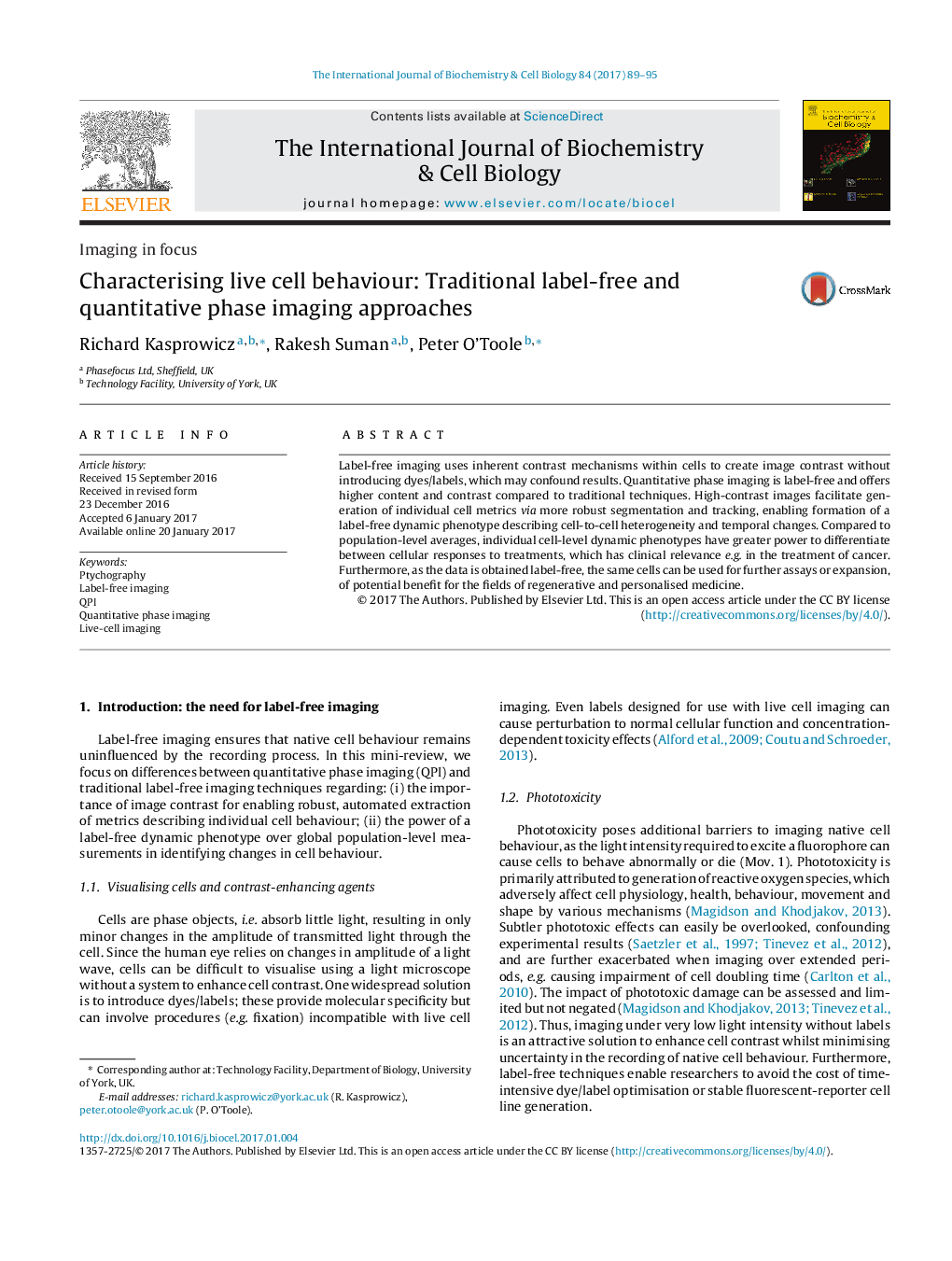| Article ID | Journal | Published Year | Pages | File Type |
|---|---|---|---|---|
| 5511446 | The International Journal of Biochemistry & Cell Biology | 2017 | 7 Pages |
â¢Dyes, labels and phototoxic routines used to generate image contrast can modify native cell behaviour.â¢Label-free imaging uses optical setups that create contrast by exploiting changes in phase delay (thickness/biomolecule composition) of cells.â¢In contrast to traditional label-free techniques (PC or DIC), quantitative phase imaging quantifies the phase delay and is high-contrast.â¢High-contrast images allow segmentation/tracking algorithms to work with fewer constraints, facilitating robust extraction of cell metrics.â¢Label-free dynamic phenotypes contain individual cell metrics, enhancing detection of behavioural changes compared to population averages.
Label-free imaging uses inherent contrast mechanisms within cells to create image contrast without introducing dyes/labels, which may confound results. Quantitative phase imaging is label-free and offers higher content and contrast compared to traditional techniques. High-contrast images facilitate generation of individual cell metrics via more robust segmentation and tracking, enabling formation of a label-free dynamic phenotype describing cell-to-cell heterogeneity and temporal changes. Compared to population-level averages, individual cell-level dynamic phenotypes have greater power to differentiate between cellular responses to treatments, which has clinical relevance e.g. in the treatment of cancer. Furthermore, as the data is obtained label-free, the same cells can be used for further assays or expansion, of potential benefit for the fields of regenerative and personalised medicine.
